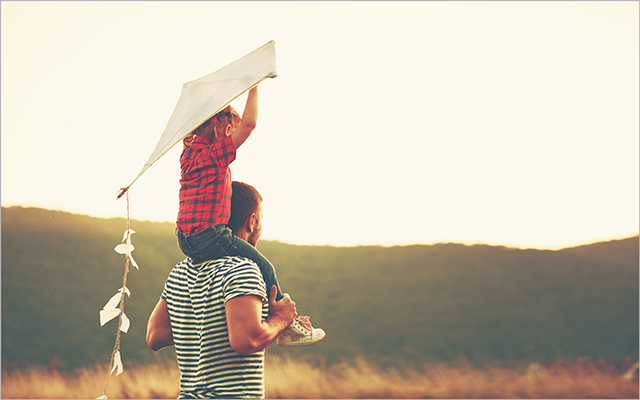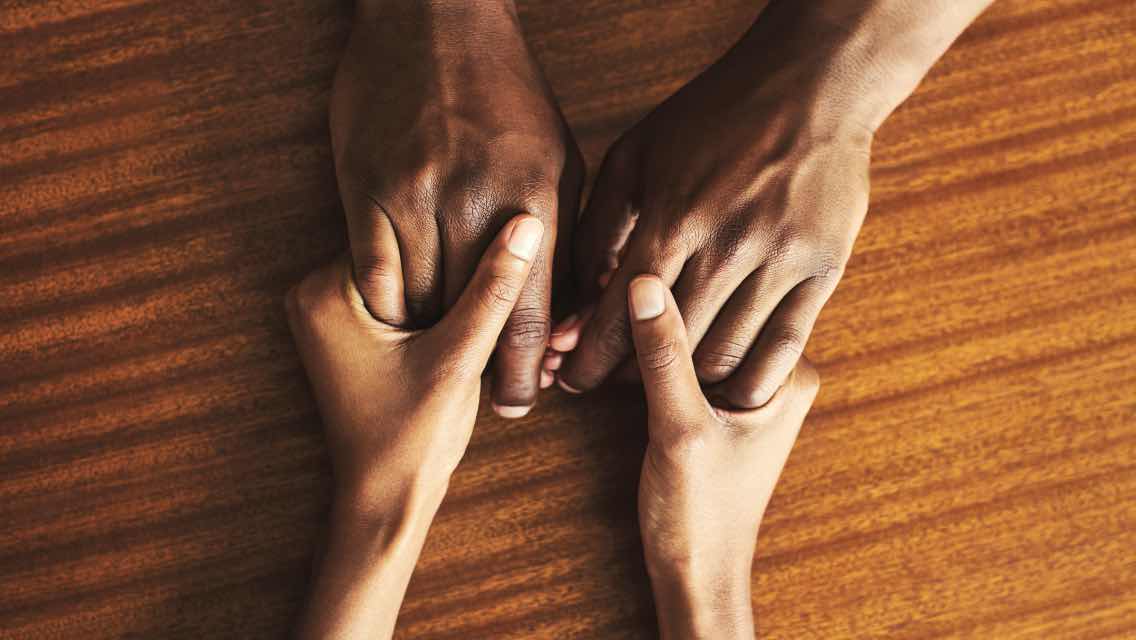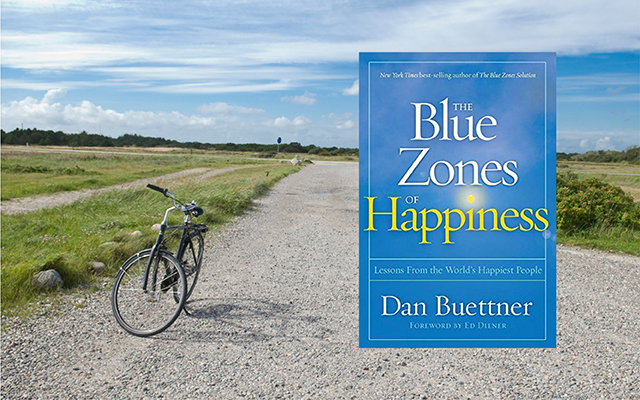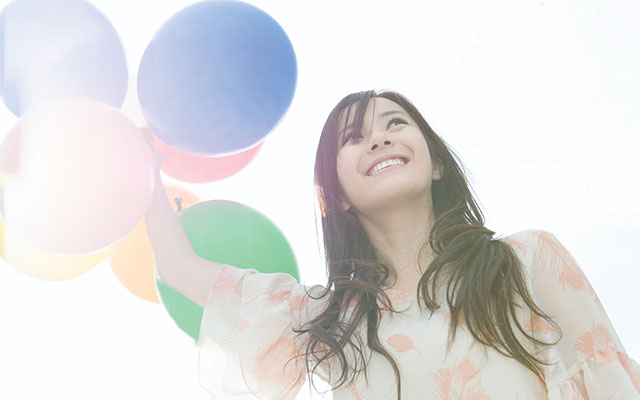“Don’t ask yourself what the world needs; ask yourself what makes you come alive, and then go and do that. Because what the world needs is people who have come alive.”
– Harold Thurman Whitman
While I waited for my entrée at an outdoor café this autumn, one of the waiters caught my attention. As he moved blithely in and out of the restaurant, I noticed that he seemed bursting with good spirits. I mused on what kinds of events might account for the happiness bubbling out of him. Was he in love? Had he just gotten a raise? I continued to watch him through the evening and noticed that his good spirits affected other people. As he swirled through the room, dancing a virtual ballet of dishes and checks, people visibly thawed.
After the waiter’s particularly witty exchange with a table of two women, the man sitting alone at a nearby table joined in. When the waiter jauntily went on to his next chore, these two tables began banter of their own, and the next thing I knew I was drawn into the fun. What started out as three tables of unconnected diners turned into an unexpectedly rich and satisfying communal exchange.
That experience with the delightful waiter gave me an insight into human nature: Joy is contagious. It not only spreads like a virus, but it also changes people who come in contact with it. This young man, who was bursting with life and happiness, brought his joy to work with him. And in his daily routine of waiting on customers, his happy glow touched people and brought smiles to their faces.
What Is Joy?
Joy is a driving force in human nature, and it exerts a powerful pull on us, drawing us toward our highest purpose and the most complete expression of our gifts. His Holiness The Dalai Lama says, “I believe that the very purpose of our life is to seek happiness.” Our brains are wired to seek out the events, people and things that create joy, happiness and pleasure. But what brings these feelings?
Life is full of basic pleasures: a perfectly ripe peach, for example, or a kiss from a loved one. The sources of happiness are highly personal: What brings satisfaction to one may mean nothing to another, but typically happiness comes when our wishes are fulfilled, when we see our standards met, when we find ourselves in a good place.
In my book, joy is a little different, because it’s inherently connected to making conscious choices about self-expression and higher purpose. Joy is not so much about what we’ve received or appreciated as it is about what we have chosen, pursued, defended and claimed for ourselves.
Joy is not so much about what we’ve received or appreciated as it is about what we have chosen, pursued, defended and claimed for ourselves.
By nature, it is the outcome of an emotional cycle that begins with feeling a deep longing, imagining all the possibilities that could fill it, experimenting and selecting from among those choices, committing to the ones that feel most right and then following through – directing the full force of our energy in the pursuit of the choices that best express our deepest-held values and priorities and that best extend our most valuable gifts.
Finding joy is in essence a creative act, one filled with a certain amount of mystery and a great deal of discovery. As a rule, it requires courage, an open mind and a willingness to explore some of our own darkest corners.
In the cyclical system of the “five master emotions” from which I teach, the path toward joy actually begins in grief. This is where we feel our own emptiness and longing, where we sense the potential of our lives in terms of space: It is the space of what isn’t there yet, but we know should be, or could be.
The next stop is fear, where we realize we aren’t certain how to fill that space. In fear, we aren’t sure how to solve our problems or achieve our goals, or even what all the possibilities are. This is the space of “what if?” as in, “What if I try this and it doesn’t work out? What if I do this and it makes people mad, or I lose everything I’ve already worked so hard for?” Fear is also the space of creativity and experimentation, where we imagine different outcomes and try things out to see if they feel right: “What if I did this instead?” and “Why not?”
From fear we progress to the emotion of anger, which is a powerful and dynamic – but not necessarily an “angry” – energy. It may help to think about it more as the energy of clarity, discernment, determination and commitment. This is where you realize exactly what is right and wrong for you, where you know how to set boundaries between your own priorities and other people’s expectations, where you eliminate distractions and detours and compromises, and instead direct your energy straight toward the thing most meant for you: your joy.
In joy you feel like you are welling up and spilling over – with happiness, with gratitude – and above all, with the desire to spread it around.
Joy is the energy of deep fulfillment, victory and celebration. It’s where all the energy you invested during the cycles of grief, fear and anger comes together in a giant supernova of delight and satisfaction. In joy, that fireball bursts open and gushes out in the form of plenty: plenty of energy, plenty of time, plenty of resources, plenty of everything you need. In fact, in joy you feel like you are welling up and spilling over – with happiness, with gratitude – and above all, with the desire to spread it around.
From joy, we naturally move into empathy, which is where we distribute our overflow, where we want to generously share the happiness we have, where we can feel the pull of needs within our own and others’ lives, and where we feel compelled to parcel out all available and appropriate resources to where they are most needed.
Cutting Corners
With all our excess resources properly distributed, we now begin the cycle of emotions again, but this time with more space, more knowledge and more energy to complete the route on a grander scale. This is how we mature and develop and become our best selves, and the cycle occurs many times (in different ways) daily, weekly, yearly and over the course of many decades. But here’s the thing: If we cut corners and try to find shortcuts through the uncomfortable parts of grief, fear and anger, we never create enough space or imagine big enough possibilities to get inspired. We never gather the self-knowledge and determination we need to make good choices. So we can’t possibly manifest the enthusiasm or commitment we need to make it to our joy. And if we miss that stop, we tend to cut a limping course straight from anger to empathy.
Joy is where we fill up and gather strength for the next round. It’s like in Monopoly, where you pass “Go” and collect $200: Miss that square often enough at the beginning of the game and you’ll find yourself very short of funds for buying property later.
You can imagine what happens then: Not feeling satisfied or fulfilled, and not having an overflow of fabulous resources to share, we go into our phase of distribution and generosity feeling worn out, resentful, empty, barely able to cope. We give more than we really have to share, and feeling sullen, sad or even bitter about it, we then drag ourselves back into grief, which now feels even more daunting than before.
This is why I would argue that successfully hitting our joy is not just a nice, pleasant thing – it is an essential thing. Joy is where we fill up and gather strength for the next round. It’s like in Monopoly, where you pass “Go” and collect $200: Miss that square often enough at the beginning of the game and you’ll find yourself very short of funds for buying property later.
Committing to Joy
There are many reasons to commit to personal joy as a life process, and not just a destination. Joyful people are fun to be around; they work better and they are more generous – with their time, their enthusiasm and their willingness to do more than what’s asked.
Joyful people want everyone to be joyful. And that may be the biggest reason of all for us to commit to our own happiness – because we affect those around us. Joy is so contagious, in fact, that I would wager that if even half of us truly committed to our own personal joy, we could use the resulting overflow of resources and energy to transform the world. And how much fun would that be?
Joyful Traits
In my coaching work, I often encounter clients who are frustrated because happiness always seems just beyond their reach. I also have the pleasure of knowing a lot of people who are truly joyful. There are three important traits I’ve noticed that most joyful people share, and now they are the same traits I work to help all my clients develop:
- Joyful people have a dream they are excited about and actively striving toward.
- They have a code of honor they adhere to.
- They are part of a community in which they feel cherished and appreciated.
Getting Back on Track
If you’re feeling dissatisfied, your daily actions might not be taking you on your proper path. Consider a few course corrections and see if they lead you in a more joyful direction.
- Identify dishonesty in your life. Find any areas of your life in which you are being slightly dishonest, either with yourself or someone else. Identify your justifications for that dishonesty. Discard the justifications, return to your personal code of honor and see how much better you feel.
- Forget about money. In any decision-making process involving money, take money out of the picture and see if your decision would be the same. The path toward material wealth is one of the most time-consuming and joy detours imaginable.
- Find your place. Take some time to evaluate where you are on the emotional path (grief, fear, anger, etc.), where you tend to get stuck and where you tend to “cut corners.” See if you can show up more fully.
This article has been updated and was originally published in December 2004.




This Post Has 0 Comments